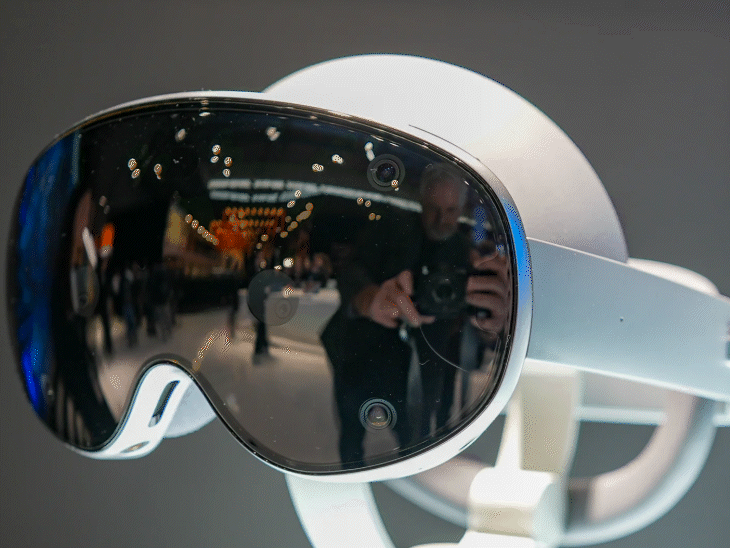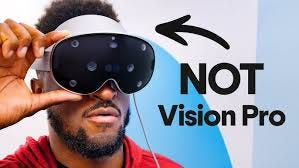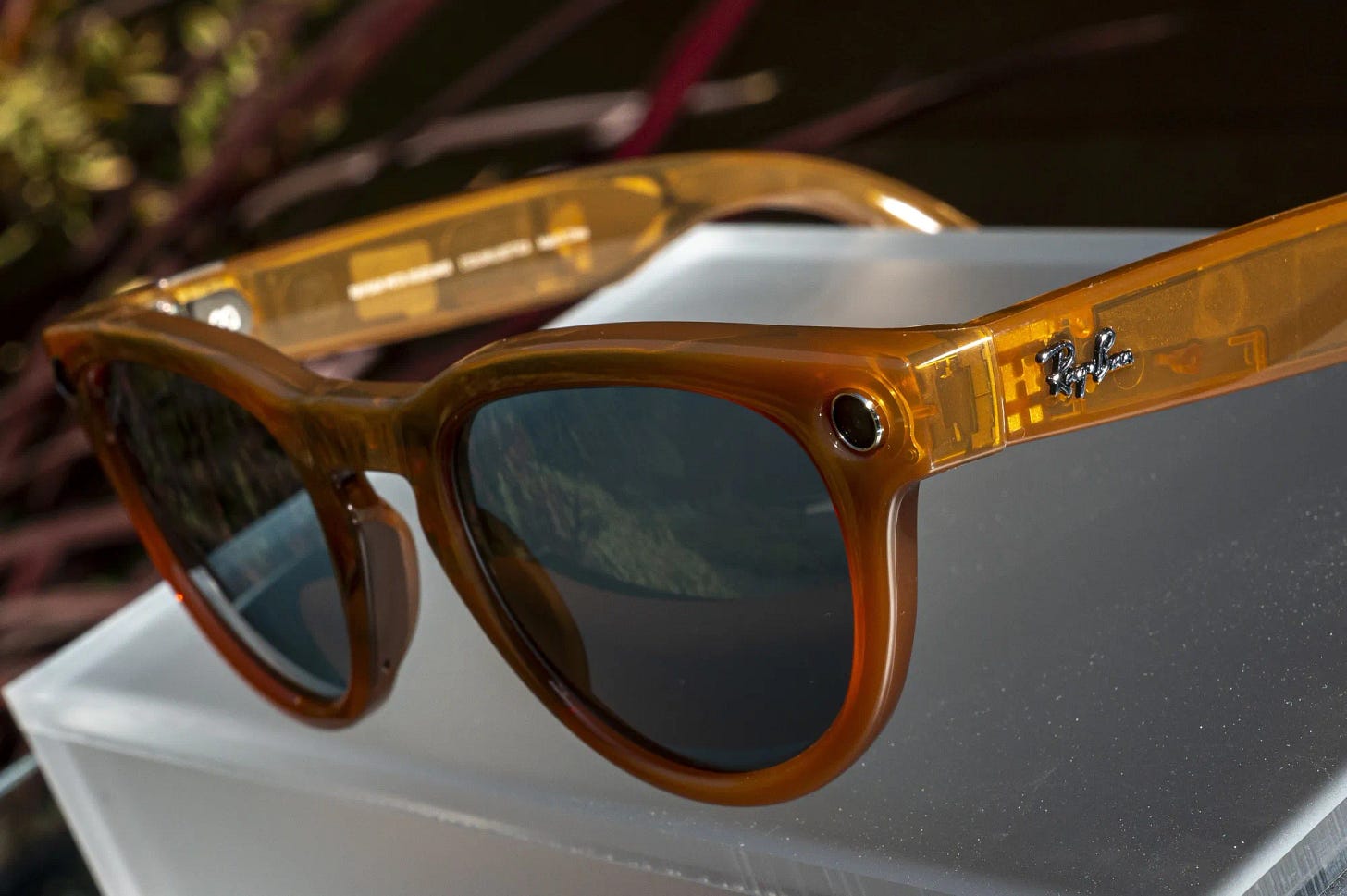AI: Google's second time at bat with 'Smart Glasses'. RTZ #734
...'with AI included', this time
We’ve talked about AI Smart Goggles/Glasses like Apple’s Vision Pro and ‘AI Smart glasses’ from companies like Meta and others in this AI Tech Wave. The category of AI Wearables is a big anticipated market for AI in the next couple of years, especially after the recent OpenAI acquisition of Jony Ive’s io Products for $6.5 billion. At Google i/o 2025, the company highlighted its ambitions on smart goggles and glasses that are worth reviewing in a bit more detail, especially after its experiment with Google Glass a few years ago.
Axios summarizes this second round for Google in glasses in “Google tries smart glasses again”:
“More than a decade after its Google Glass flopped, Google is developing a new generation of augmented reality glasses designed to merge the physical and digital worlds.”
“Why it matters: Augmented reality glasses are shaping up to be a key interface for AI-powered computing.”
“Meta has invested steadily in the category and Apple and others are ramping up development.”
“Driving the news: At Google I/O, the company offered more details on its prototype Android XR glasses and announced partnerships with Samsung and Warby Parker.”
“Unlike Meta's existing Ray-Ban smart glasses, Google's prototype adds an optional small display to the standard cameras, speakers and microphones.”
“Google also showed off its Gemini AI assistant running on its Project Moohan headset, the Apple Vision Pro rival that Samsung and Google plan to start selling later this year.”
“Google teased a third device, Project Aura, by Chinese hardware maker Xreal, known for glasses that allow users to both see the real world and watch movies and other content on a large virtual display.”
The differences between the goggles and glasses are worth noting:
“How it works: Google's XR glasses connect via a nearby smartphone, while Aura glasses tether to a small custom computer powered by a Qualcomm processor.”
“Flashback: Introduced in 2013, the "explorer edition" of Google Glass cost a whopping $1,500 despite its limited function and awkward design, including a small display that was housed in a prominent acrylic block. Those who bought the device were often mocked, with some dubbing wearers as "glassholes."
“Google has had an on-again, off-again relationship with virtual and augmented reality ever since. It has had a range of products, many short-lived, including its low-end Cardboard and its Daydream family of devices.”
“Between the lines: Reflecting on Google Glass, Sergey Brin said the product was too expensive and too distracting, among other flaws.”
"I definitely feel like I made a lot of mistakes with Google Glass," Brin said during an on-stage interview at Google I/O, appearing alongside Demis Hassabis. "I just didn't know anything about consumer electronic supply chains."
"I am still a big believer in the format, so I'm glad that we have it now."
The products now have the support of Google’s current AI Deepmind chief, Sir Demis Hassabis:
Hassabis said modern AI gives the glasses a purpose.”
“"I feel like the universal assistant is the killer app for smart glasses and I think that's what's going to make it work," he said, adding that the underlying hardware technology "has also moved on and improved a lot."
“Zoom in: I got to try both the prototype Android AR glasses and Project Moohan and both felt like a glimpse of the future and solid competitors to the products on the market.”
“The display on the AR glasses is small but has enough detail to show images, such as a small map with directions. Google's Gemini AI assistant is available at the touch of a button and was able to answer a wide array of questions about paintings and other objects in the demo environment.”
“Project Moohan felt lighter than the Vision Pro and had an impressive field of view.”
“The controls were just as intuitive as the Vision Pro, but with an easier setup.”
“Yes, but: Google's augmented reality glasses aren't coming this year, while Meta is expected to offer a version of its Ray-Bans with a small screen included.”
“Project Aura is also seen as largely a 2026 proposition, though some developers might get their hands on the device a bit sooner.”
I recently discussed the Google Project Moohan glasses in a post complete with some video clips that show the key innovations on Voice + GUI (graphical user interface).
Apple is also reportedly joining the ‘smart glasses’ category beyond its Vision Pro goggles. Meta’s not going to have the market by itself for long at 2 millions units and growing.
The broader point is that we’re going to see ‘Smart Glasses’ as a key segment next year, taking unit sales from low millions to tens of millions, and potentially higher beyond.
And we’ll of course see other innovations in wearing AI around us in this AI Tech Wave that’ll both supplement and compete with glasses on our faces. Stay tuned.
(NOTE: The discussions here are for information purposes only, and not meant as investment advice at any time. Thanks for joining us here)







